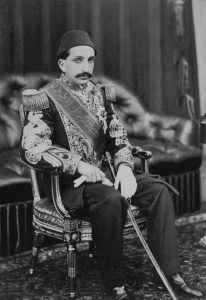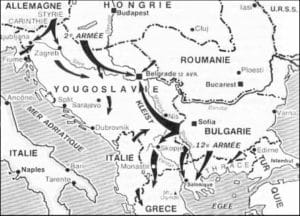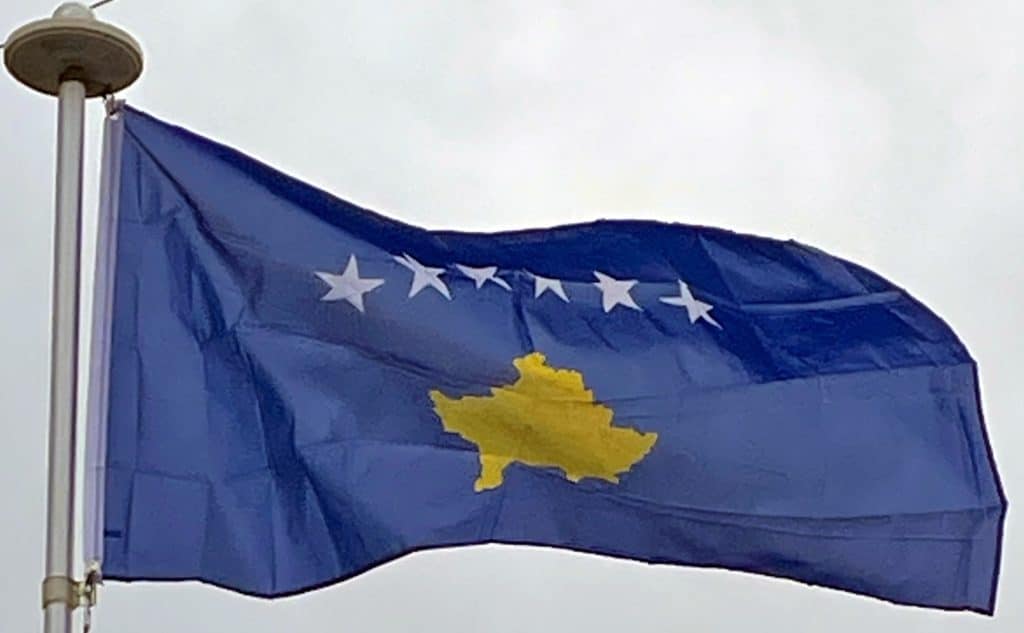The modern Albanian-Serbian conflict has its roots in the expulsion of the Albanians in 1877–1878 from areas that became incorporated into the Principality of Serbia. During and after the Serbian–Ottoman War of 1876–78, between 30,000 and 70,000 Muslims, mostly Albanians, were expelled by the Serb army from the Sanjak of Niš and fled to the Kosovo Vilayet. According to Austrian data, by the 1890s Kosovo was 70% Muslim (nearly entirely of Albanian descent) and less than 30% non-Muslim (primarily Serbs). At the turn of the century in 1901, widespread massacres were committed against the Serbian population by the Albanian population across the Kosovo Vilayet.
Kingdom of Yugoslavia:
The Young Turk movement took control of the Ottoman Empire after a coup in 1912 which deposed Sultan Abdul Hamid II. The movement supported a centralized form of government and opposed any sort of autonomy desired by the various nationalities of the Ottoman Empire. An allegiance to Ottomanism was promoted instead. An Albanian uprising in 1912 exposed the empire’s northern territories in Kosovo and Novi Pazar, which led to an invasion by the Kingdom of Montenegro. The Ottomans suffered a serious defeat at the hands of Albanians in 1912, culminating in the Ottoman loss of most of its Albanian-inhabited lands.

A wave of Albanians in the Ottoman army ranks also deserted during this period, refusing to fight their own kin. In September 1912, a joint Balkan force made up of Serbian, Montenegrin, Bulgarian and Greek forces drove the Ottomans out of most of their European possessions. The rise of nationalism hampered relations between Albanians and Serbs in Kosovo, due to influence from Russians, Austrians and Ottomans. After the Ottomans’ defeat in the First Balkan War, the 1913 Treaty of London was signed with Western Kosovo (Metohija) ceded to the Kingdom of Montenegro and Eastern Kosovo ceded to the Kingdom of Serbia. Soon, there were concerted Serbian colonization efforts in Kosovo during various periods between Serbia’s 1912 takeover of the province and World War II. So the population of Serbs in Kosovo fell after World War II, but it had increased considerably before then.
In the winter of 1915–16, during World War I, Kosovo saw the retreat of the Serbian army as Kosovo was occupied by Bulgaria and Austria-Hungary. In 1918, the Allied Powers pushed the Central Powers out of Kosovo. After the end of World War I, the Kingdom of Serbia was transformed into the Kingdom of Serbs, Croats and Slovenians on 1 December 1918.

After the Axis invasion of Yugoslavia in 1941, most of Kosovo was assigned to Italian-controlled Albania, with the rest being controlled by Germany and Bulgaria.
Communist Yugoslavia:
The province as in its outline today first took shape in 1945 as the Autonomous Kosovo-Metohian Area. Until World War II, the only entity bearing the name of Kosovo had been a political unit carved from the former vilayet which bore no special significance to its internal population. In the Ottoman Empire, it had been a vilayet with its borders having been revised on several occasions. When the Ottoman province had last existed, it included areas which were by now either ceded to Albania, or found themselves within the newly created Yugoslav republics of Montenegro, or Macedonia (including its previous capital, Skopje) with another part in the Sandžak region of southwest Serbia.
